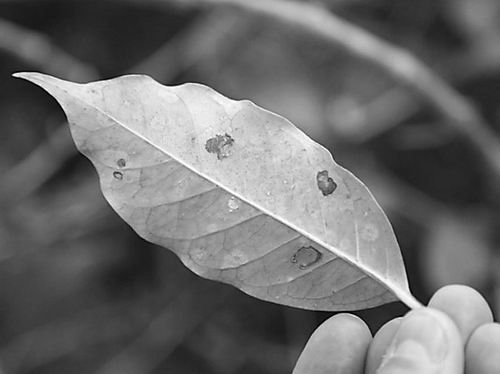Scientists propose new way to fight coffee leaf rust

Recently, coffee scientists from all over the world have come to the Eje Cafetero region of Colombia, a hillside home to thousands of small coffee farms. At the 25th International Coffee Conference (ASIC), scientists are discussing an urgent problem: how to deal with coffee leaf rust. This is the most harmful coffee disease in the world. Leaf rust hit coffee farms in Latin America, causing 1 billion dollars in economic losses to farmers and halving coffee production across Central America. Scientists have announced several new molecular technologies that can fight the epidemic.
Helping coffee plants resist fungi is a top priority. Colombia leads the world in developing rust-resistant coffee varieties (also known as cultivated varieties). When coffee leaf rust was first discovered in East Africa in the 1860s and in South America in the 1970s, Cenicaf, Colombia's National Coffee Research Center, was already working on a rust-resistant variety project. Since then, Cenicaf has developed two coffee varieties-Colombia in 1980 and Castillo in 2005. Since 1983, these varieties have successfully resisted leaf rust and preserved world-class coffee characteristics: high yield, large grain and good taste.
However, unlike drugs, it takes a lot of time and money for a new coffee variety to enter the market from the research stage. "it took us 25 years to develop a new variety," said Hernando Cortina, a genetic improvement researcher at Cenicaf. One way to reduce time is to use genetic markers to evaluate the genes we are interested in. "
At the ASIC conference, Cortina presented a database of all Cenicaf coffee varieties. It includes more than 600 genetic resources, most of which are of Ethiopian origin. These genetic resources encode related traits, such as disease resistance and aroma. When breeding a new rust-resistant variety, Cortina can screen the first generation of plants by genetic method to simplify the process. If there is a marker associated with rust resistance, researchers will not have to wait until an outbreak of rust on the manor to see if the variety is resistant. But budget cuts limit these genetic experiments, Cortina said. "We still need to verify the rust resistance gene. Once we find the correlation, we can start screening. "
Important Notice :
前街咖啡 FrontStreet Coffee has moved to new addredd:
FrontStreet Coffee Address: 315,Donghua East Road,GuangZhou
Tel:020 38364473
- Prev

Outside morning review: cocoa futures hit a three-and-a-half-year high Arabica coffee futures rose sharply
New YORK / London (Reuters)-Cocoa futures jumped on Wednesday, returning to a three-and-a-half-year high on fears that the spread of Ebola in West Africa could drag down exports from the world's largest cocoa-producing region. ICE Arabica coffee futures jumped nearly 5%, helped by technical buy signals and weather forecasts showing that Brazil, the largest grower of coffee beans, was close.
- Next

Five reasons Starbucks is successful in China
Five reasons Starbucks is successful in China. If any company should have failed in China, it was Starbucks. China has thousands of years of tea drinking history and a strong tea culture. No one ever thought that Chinese people would drink coffee instead of tea. Yet Starbucks has managed to open more than 570 stores since it landed in China 20 years ago,
Related
- Why can American refills for free? The difference between Americano and American drip pot coffee
- Being chased out of the rain in front of Starbucks?! Store: Sheltering from rain under umbrellas poses a safety hazard
- The white moonlight has changed?! Lucky launches "Big Winter Pear American"
- Hand-brewed coffee three-stage method, high-sweet and universal brewing method to share! What does the high sweet water level of hand-brewed coffee mean?
- What is the difference between raw, refined and full espresso coffee? How to extract espresso and taste good?
- A complete list of coffee bean names and their meanings! What is Yejia Shefi coffee? Where is Mantelin coffee?
- What grade does Arida Manor Kaduai coffee beans belong to? What treatment is Arida ASD slow anaerobic sun exposure?
- The milk tea cup becomes smaller?! Overlord Tea Girl launches a new "Return to Yunnan" series
- Accused of selling counterfeit and high-priced coffee beans! Well-known boutique coffee brand "Oukelao" bowed and apologized!
- How to make espresso dumplings? Can I eat coffee and glutinous rice balls together?

